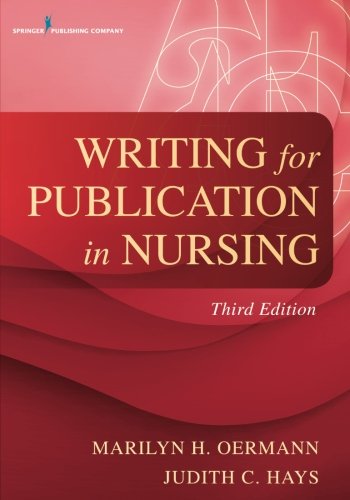

Most ebook files are in PDF format, so you can easily read them using various software such as Foxit Reader or directly on the Google Chrome browser.
Some ebook files are released by publishers in other formats such as .awz, .mobi, .epub, .fb2, etc. You may need to install specific software to read these formats on mobile/PC, such as Calibre.
Please read the tutorial at this link: https://ebookbell.com/faq
We offer FREE conversion to the popular formats you request; however, this may take some time. Therefore, right after payment, please email us, and we will try to provide the service as quickly as possible.
For some exceptional file formats or broken links (if any), please refrain from opening any disputes. Instead, email us first, and we will try to assist within a maximum of 6 hours.
EbookBell Team

4.3
28 reviewsDesignated a Doody's Core Title!
Praise for the Second Edition
Provides helpful tips for all levels of writing and is a comprehensive, solid reference for any nurse who plans to write for publication.
--;BookEnds
Writing for publication is essential for disseminating nursing knowledge, and this book will surely prepare budding authors and serve as a resource for experienced authors. It is a great reference for authors at all levels."; Score: 100, Five Stars
--Doody's
The ability to communicate in writing is an essential skill, particularly for nurses at the graduate level. This is a best-selling, comprehensive, and widely used resource on writing for nurse clinicians, faculty, researchers, and graduate students. It covers all kinds of writing that beginning and experienced nurse authors may be required or choose to undertake: journal articles, book chapters, and preparing manuscripts from course work. Brimming with helpful examples, the book takes the reader step by step through the entire process of writing, from the generation of an idea through searching the nursing literature, preparing an outline, writing and revising a draft, and submitting the finished product for publication.
In addition to being extensively updated, the third edition features new chapters on writing articles reporting quality improvement studies and on open-access publications. New writing samples have been added that illustrate how to present multiple types of research and writing for various types of journals and other venues. The book describes how to select an appropriate journal and gear the writing for the intended audience, submit a manuscript, and respond to reviewers. It provides strategies for searching bibliographic databases, analyzing and synthesizing the literature, and writing a literature review. Information is included on developing manuscripts from theses and dissertations, writing a paper with multiple authors, and when and how to include tables or figures. Ethical considerations are also addressed.
FEATURED IN THE THIRD EDITION:
Marilyn H. Oermann, PhD, RN, ANEF, FAAN, is the Thelma M. Ingles Professor of Nursing and Director of Evaluation and Educational Research at Duke University School of Nursing, Durham, North Carolina. She is author/coauthor of 15 nursing education books and many articles on evaluation, teaching in nursing, and writing for publication. She is the editor of Nurse Educator and the Journal of Nursing Care Quality. Dr. Oermann lectures widely on teaching and evaluation in nursing and on writing for publication.
Judith C. Hays, PhD, RN, FGSA, is Associate Professor Emerita at Duke University School of Nursing, Durham, North Carolina. She is author/coauthor of a psychiatric epidemiology textbook and more than 70 scientific articles on late-life living arrangements, religiousness, depression, palliative care and bereavement, and nursing history. She is coeditor emeritus of the journal Public Health Nursing. Dr. Hays edits the scientific writing of faculty in baccalaureate, master's, and Doctor of Nursing Practice (DNP) programs.